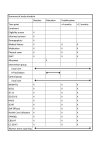Clinical effectiveness and cost-effectiveness of the rehabilitation enablement in chronic heart failure facilitated self-care rehabilitation intervention for people with heart failure with preserved ejection fraction and their caregivers: rationale and protocol for a multicentre randomised controlled trial - REACH-HFpEF trial
- PMID: 40436450
- PMCID: PMC12121609
- DOI: 10.1136/bmjopen-2024-094254
Clinical effectiveness and cost-effectiveness of the rehabilitation enablement in chronic heart failure facilitated self-care rehabilitation intervention for people with heart failure with preserved ejection fraction and their caregivers: rationale and protocol for a multicentre randomised controlled trial - REACH-HFpEF trial
Abstract
Introduction: Heart failure with preserved ejection fraction (HFpEF) is common and causes functional limitation, poor health-related quality of life (HRQoL) and impairs prognosis. Exercise-based cardiac rehabilitation is a promising intervention for HFpEF, but there is currently insufficient evidence to support its routine use. This trial will assess the clinical and cost-effectiveness of a 12-week health professional-facilitated, home-based rehabilitation intervention (REACH-HF), in people with HFpEF, for participants and their caregivers.
Methods and analysis: REACH-HFpEF is a parallel two group multicentre randomised controlled trial with 1:1 individual allocation to the REACH-HF intervention plus usual care (intervention group) or usual care alone (control group) with a target sample size of 372 participants with HFpEF and their caregivers recruited from secondary care centres in United Kingdom. Outcome assessment and statistical analysis will be performed blinded; outcomes will be assessed at baseline and 4-month and 12-month follow-up. The primary outcome measure will be patients' disease-specific HRQoL, measured using the Minnesota Living with Heart Failure questionnaire, at 12 months. Secondary outcomes include patient's exercise capacity, psychological well-being, level of physical activity, generic HRQoL, self-management, frailty, blood biomarkers, mortality, hospitalisations, and serious adverse events, and caregiver's HRQoL and burden. A process evaluation and substudy will assess the fidelity of intervention delivery and adherence to the home-based exercise regime and explore potential mediators and moderators of changes in HRQoL with the intervention. Qualitative studies will describe facilitators' experiences of delivery of the intervention. A cost-effectiveness analysis (CEA) of the REACH-HF intervention in participants with HFpEF will estimate incremental cost per quality-adjusted life year at 12 months. The CEA will be conducted from a UK NHS and Personal Social Services perspective and a wider societal perspective. The adequacy of trial recruitment in an initial 6-month internal pilot period will also be checked.
Ethics and dissemination: The study is approved by the West of Scotland Research Ethics Committee (ref 21/WS/0085). Results will be disseminated via peer-reviewed journal publication and conference presentations to researchers, service users and policymakers.
Trial registration number: ISRCTN47894539.
Keywords: Heart failure; REHABILITATION MEDICINE; Self Care.
© Author(s) (or their employer(s)) 2025. Re-use permitted under CC BY. Published by BMJ Group.
Conflict of interest statement
Competing interests: None declared.
Figures



References
-
- National Cardiac Audit Programme . National heart failure audit: 2019 summary report (2017/18 data) London: NICOR; 2019.
-
- National Institute for Health and Care Excellence Chronic heart failure in adults: diagnosis and management. NICE Guideline [NG106] 2018. - PubMed
Publication types
MeSH terms
LinkOut - more resources
Full Text Sources
Medical
Research Materials
Miscellaneous
